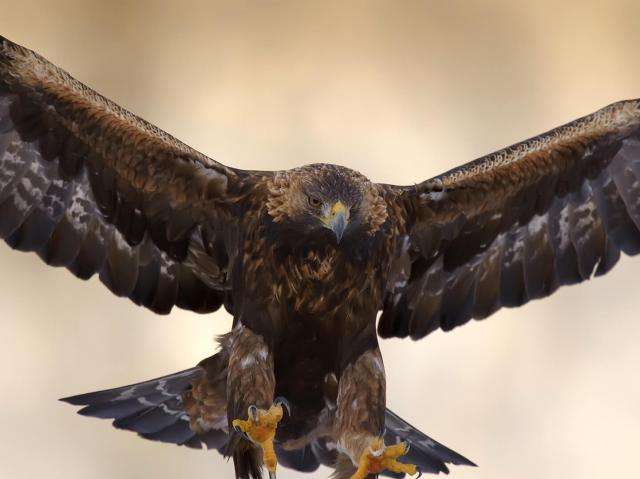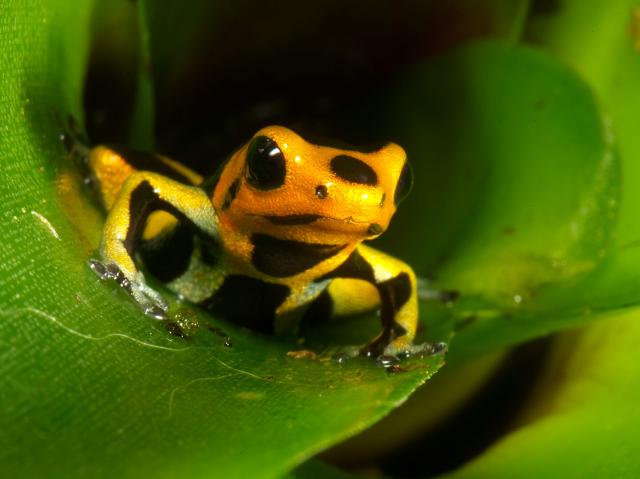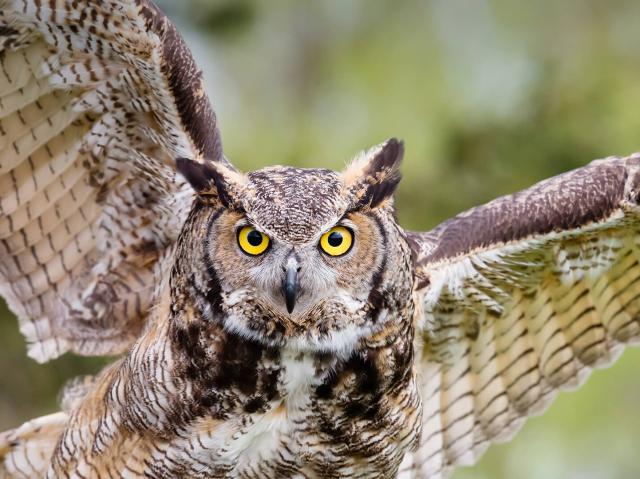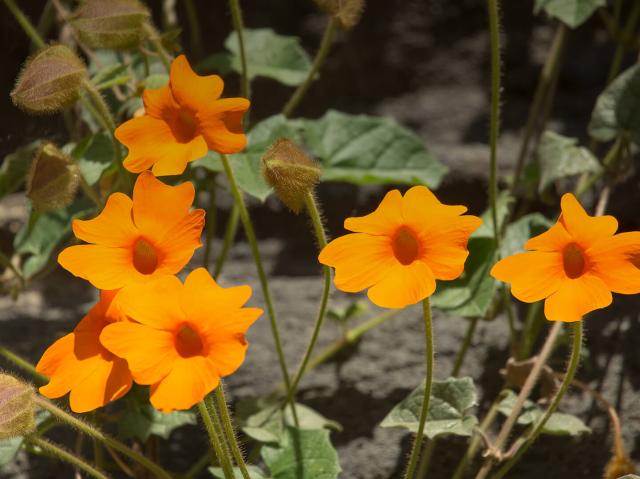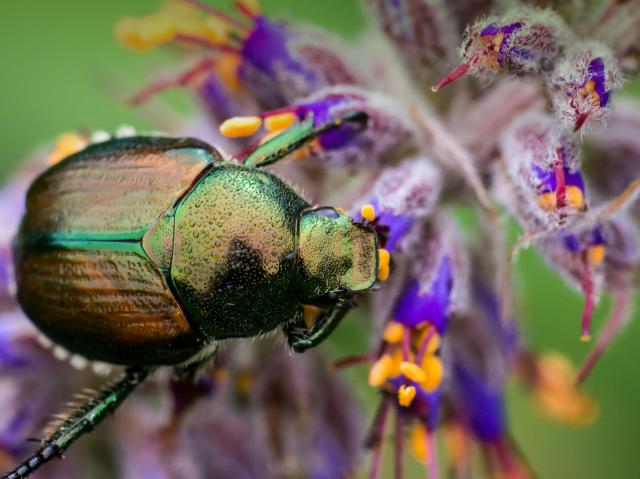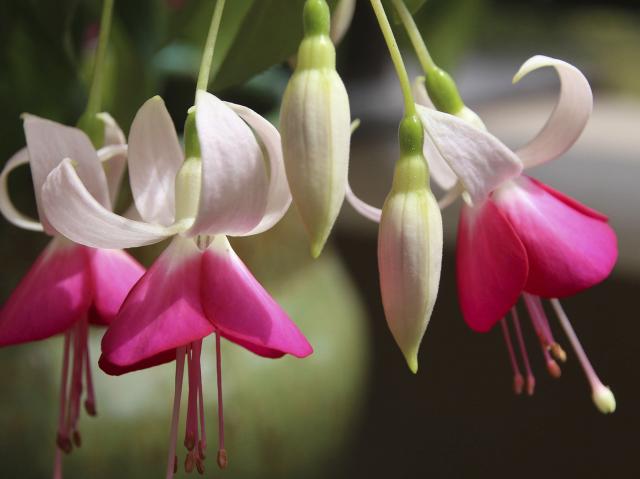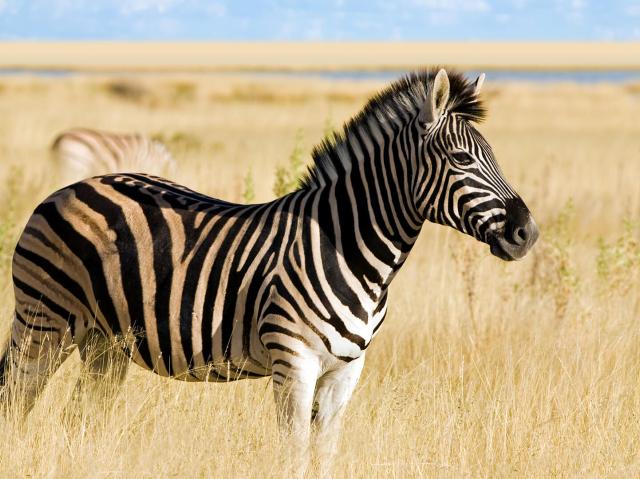
Wild Swine (Pig and Hog)

- CLASS: Mammalia (Mammals)
- ORDER: Artiodactyla
- FAMILY: Suidae
- SUBFAMILY: Suinae
- GENERA: 6
- SPECIES: 18

ABOUT
Mighty fine swine: Beauty may be in the eye of the beholder, but there's more to wild swine (also known as pigs, hogs, and boars) than meets the eye! From the petite pygmy hog to the immense Eurasian wild pig, swine are fascinating animals. Each species has its own distinctive look, behavior, and geographic region but shares many traits: strength, resourcefulness, and intelligence.
All swine (a plural noun meaning pigs) have that familiar piggy look: small eyes, expressive ears, and a squared-off snout for digging. But let’s skip to the end—the back end, that is. If a porcine individual’s tail is curly, then he or she is domesticated; wild pigs have straight tails. Domestic pigs often get much larger than their wild counterparts: a few have weighed more than 1,000 pounds (450 kilograms)! Males are always much larger than the females and have larger, more prominent tusks.
While humans hunt swine for food, natural predators include large cats, hyenas, and even pythons. The pigs' primary defense is speed, but when cornered, they can behave quite fiercely. Their lower tusks, which can get to be about 3 inches (7 centimeters) long, are razor sharp and make excellent weapons! Red river hogs can even swim underwater to escape from leopards, catching a breath every 15 seconds or so.
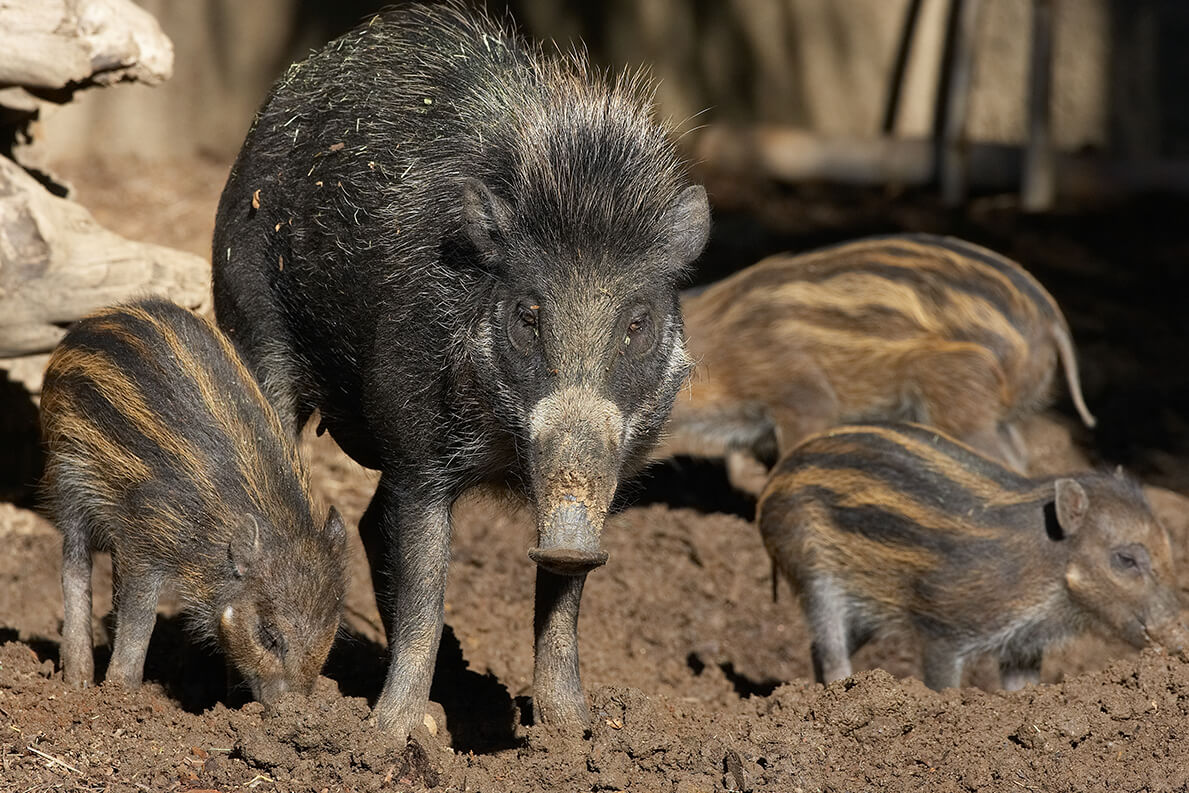
Visayan warty pig—mysterious but charming: Native to the Philippines, not much is known about Visayan warty pigs in the wilderness, but wildlife care specialists describe the pigs at our Zoo as playful and friendly. The boars have three pairs of fleshy warts, or bumps, on their face. Biologists think these warts help protect the warty pig from the tusks of a rival during a fight. The boars also grow stiff, spiky "hairdos" as mating season approaches.
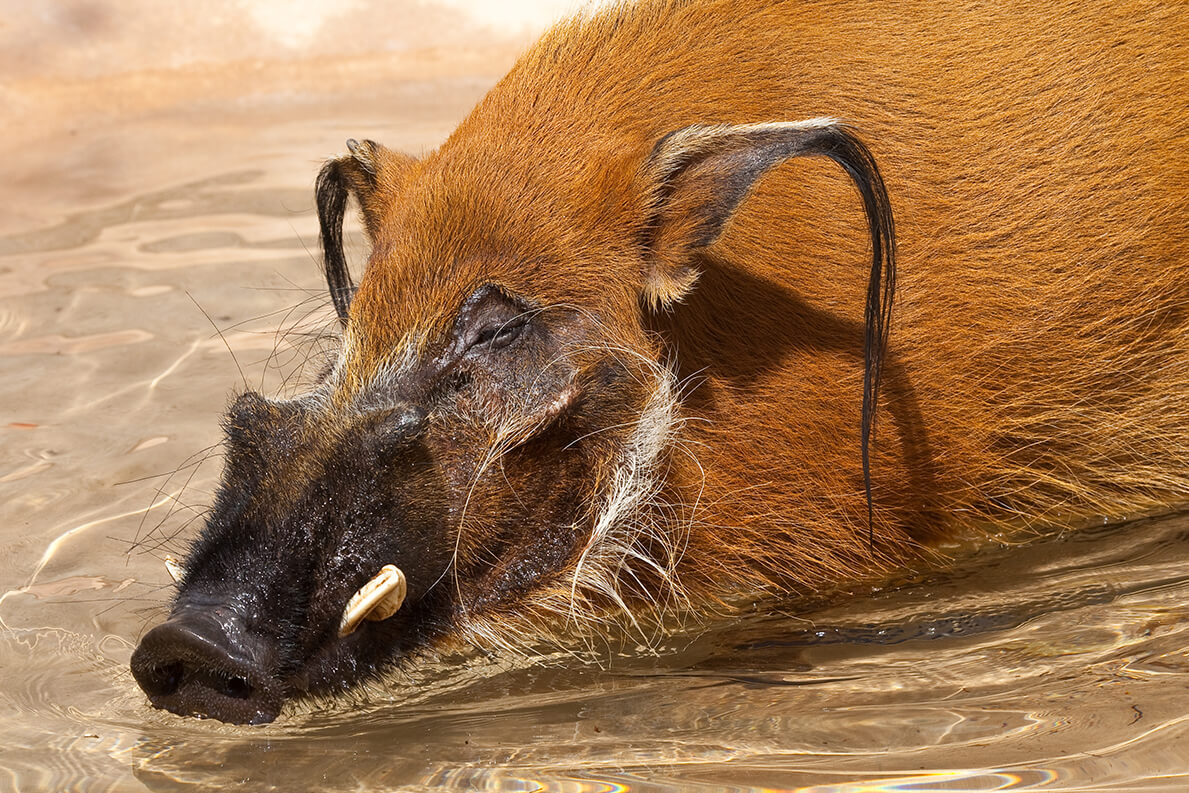
Red river hog—a pig of a different color: The red river hog is found in Africa. It is named for its reddish brown fur and the fact that it often wades through water. (Red river hogs don't live in a red river!) These pigs are active during both day and night, and are good swimmers. It's interesting to note that while many pigs are becoming scarce as a result of people moving into their habitat, these changes actually help red river hogs: as farming spreads, the farms provide good grazing for the hogs and lessen the leopard population.

Babirusa—the pig deer: Known as “pig deer” in Indonesia, babirusas come from islands rich in tropical forests. Because of the warm and humid climate, their coat is sparse, short, and light. Their face is covered in bristles, and they don’t sport the warts that some other pig species do. Instead of growing from the sides of the jaw, the babirusas’ tusks grow up through the top of the mouth, curving backward on the top of the nose. The males use these for fighting, locking an opponent’s tusks to stop attacks.
Chances are that when you heard the word pig in the past, you pictured the pink, domestic barnyard variety. Perhaps now you'll think of the wonderful variety of swine in the world, ready to root in the dirt or battle an opponent. There's just no such thing as a plain pig!
HABITAT AND DIET
Wild swine species have adapted to live in a variety of climates and habitats. Red river hogs and babirusas live in rainforests, bush pigs and forest hogs live in forests, and warthogs are at home in the savanna. All make good use of mud wallows to cool off and to protect their skin from parasites and insect bites. They are generally crepuscular or nocturnal, resting during the day in burrows or hollows they make in stands of tall grass or leaf litter.
Pigs and hogs are omnivores: their varied diet can include small reptiles, mammals, and carrion, along with grasses, water plants, and fruit. A good part of each day is spent foraging. All pigs use that tough snout to root in the soil for food items such as leaves, roots, bulbs, insects, and earthworms. An acute sense of smell allows swine to detect an edible root or tuber 10 inches (25 centimeters) below the soil. Because of this behavior, wild swine have become infamous for rooting through and destroying large portions of farmers' crops.
FAMILY LIFE
Wild pigs are generally social, living in close-knit groups called sounders that are made up of adult females (sows) and their offspring, along with an adult male (boar). Young boars may form bachelor herds until they're old enough to mate. Boars are generally solitary, but sows stay with the sounder unless they are rearing young. Sounders can be made up of many generations.
The home ranges of sounders often overlap, with shared feeding grounds, water holes, mud wallows, resting sites, and sleeping dens. Ranges can vary in size, depending on the species, from about 60 acres (24 hectares) for pygmy hogs to 7 square miles (1,813 hectares) for Eurasian wild pigs.
Pigs have excellent senses of smell and hearing and communicate with one another using a variety of grunts, squeaks, and chirrups. Calls are made to keep in touch with the rest of the group or to warn of danger. Alarm calls can include a short grunt, a longer growl, and a loud roar. Pigs also get their message across through body postures, such as raising the crest of hair on the back, cocking the ears, grinding the teeth, or jerking the head up or to the side. Pigs also have scent glands on different areas of the face. They spread their scent by rubbing their face on trees or rocks or by plowing into the earth.
During breeding season, a boar follows a sow and nudges her repeatedly to see if she is receptive. If she is, she lets him know by letting him smell and taste her urine. He then stays with her for several days before moving on to find yet another sow to breed with, fending off other boars with his tusks.
When ready to give birth, the pregnant sow looks for a secluded place, where she makes a nest by digging a shallow hole and lining it with plant material. Wild swine typically produce up to 6 babies (piglets) in a litter, but some species may have up to 14. Piglets are born with their eyes open, and those of most species look like brown striped watermelons with legs; babirusa, warthog, and forest hog piglets are solid colored at birth.
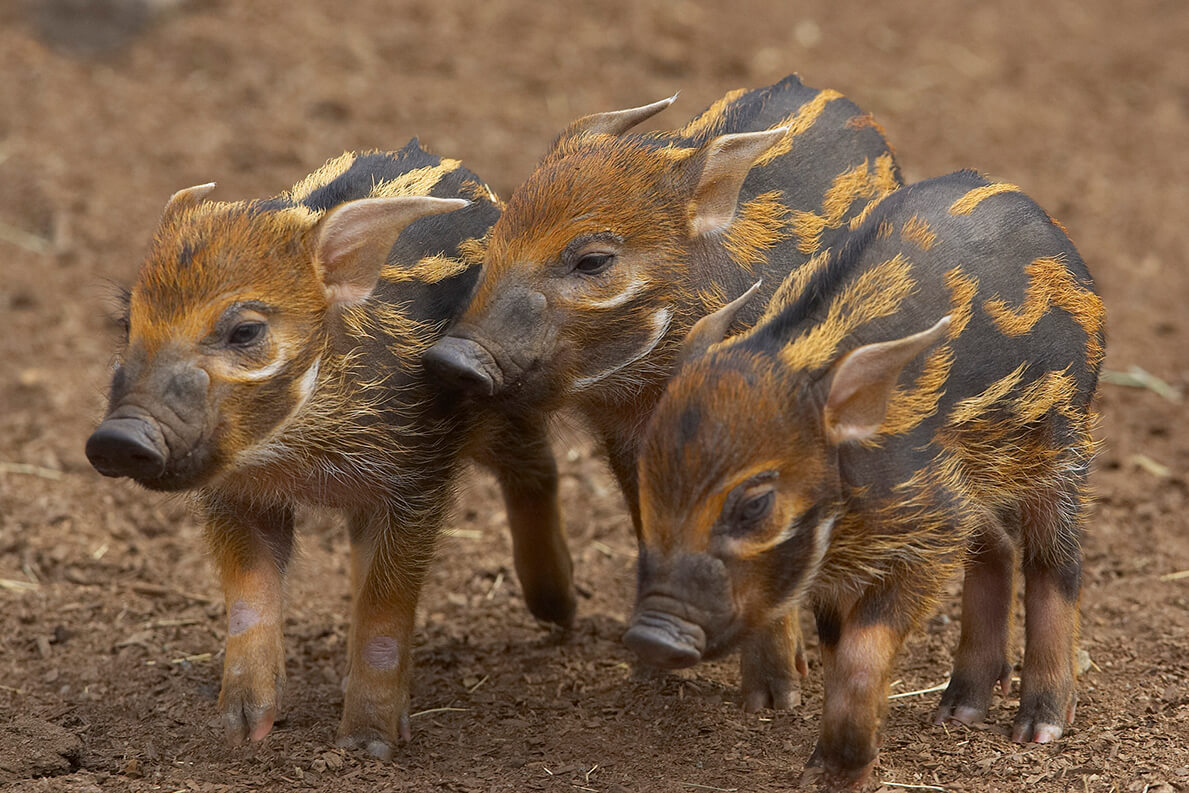
Piglets remain hidden in a grass nest dug by the mother for their first 10 days before venturing out. Sows and piglets move together as a unit until the youngsters are weaned at about three months of age. The piglets are then old enough to join the sounder, which includes other sows, piglets, and young adults. They remain close to their mother for one to three years, depending on the species, until they're mature.
CONSERVATION
Humans have hunted bearded pigs for food for more than 40,000 years, and began domesticating Eurasian wild pigs in Europe, India, China, and Malaysia about 7,000 years ago.
Pygmy hogs are the smallest of all wild pigs. They live in India, in the foothills of the Himalayan Mountains. Little is known about these rare animals, and by the 1960s, they were thought to be extinct because of hunting and loss of habitat. Then, a small number of the tiny pigs was discovered in 1971—good news for pig lovers everywhere! Since their habitat continues to shrink, pygmy hogs are still at critical risk of extinction.
Living on a small island can be difficult for animals: they cannot leave to escape predators, food shortages, or hunters. This has affected swine species such as the Visayan warty pig, found on only two islands in the Philippines, and the Javan warty pig found on only the Indonesian island of Java.
San Diego Zoo Wildlife Alliance is dedicated to helping the pig species of the world. For example, since the early 1990s, the Zoo has funded Visayan warty pig conservation efforts in the Philippines. By supporting San Diego Zoo Wildlife Alliance, you are our ally in saving and protecting wildlife worldwide.
Sounds
LIFE SPAN
5 to 20 years, depending on species
YOUNG
Gestation: 90 to 171 days, depending on species
Number of young at birth: 2 to 14; rarely 1
Weight at birth: 1.5 to 2.2 pounds (700 to 1,000 grams), depending on species
Age of maturity: 10 months to 3 years, depending on species
SIZE
Length: Longest - giant forest hog Hylochoerus meinertzageni, up to 6.9 feet (2.1 meters); shortest - pygmy hog Porcula salvania, 1.8 to 2.4 feet (55 to 71 centimeters)
Height: Tallest - Eurasian wild pig Sus scrofa and giant forest hog, up to 3.6 feet (1.1 meters) at shoulder; Shortest - pygmy hog, 9.8 inches (25 centimeters) at shoulder
Weight: Heaviest - Eurasian wild pig, up to 710 pounds (320 kilograms); Lightest - pygmy hog, 14.5 to 21 pounds (6.6 to 9.7 kilograms)
FUN FACTS
Do you sweat like a pig? Impossible! Pigs don't sweat, which is one reason they need to cool off in water and mud wallows.
Bearded pigs are champion jumpers, and can leap over barriers 7 feet (2.1 meters) high.
Almost all Visayan warty pigs in US zoos were born at the San Diego Zoo.



